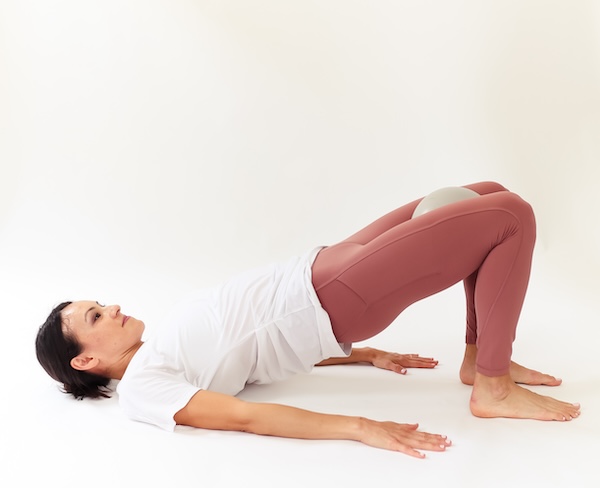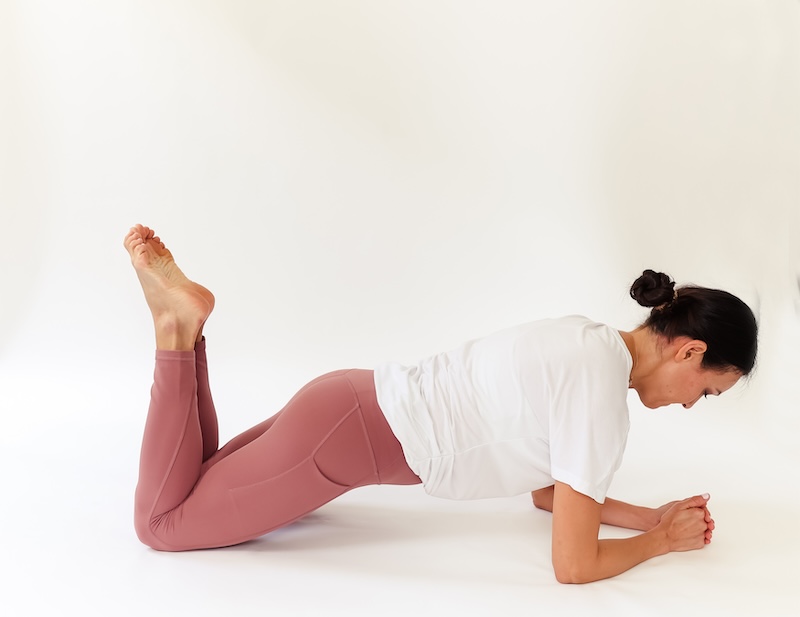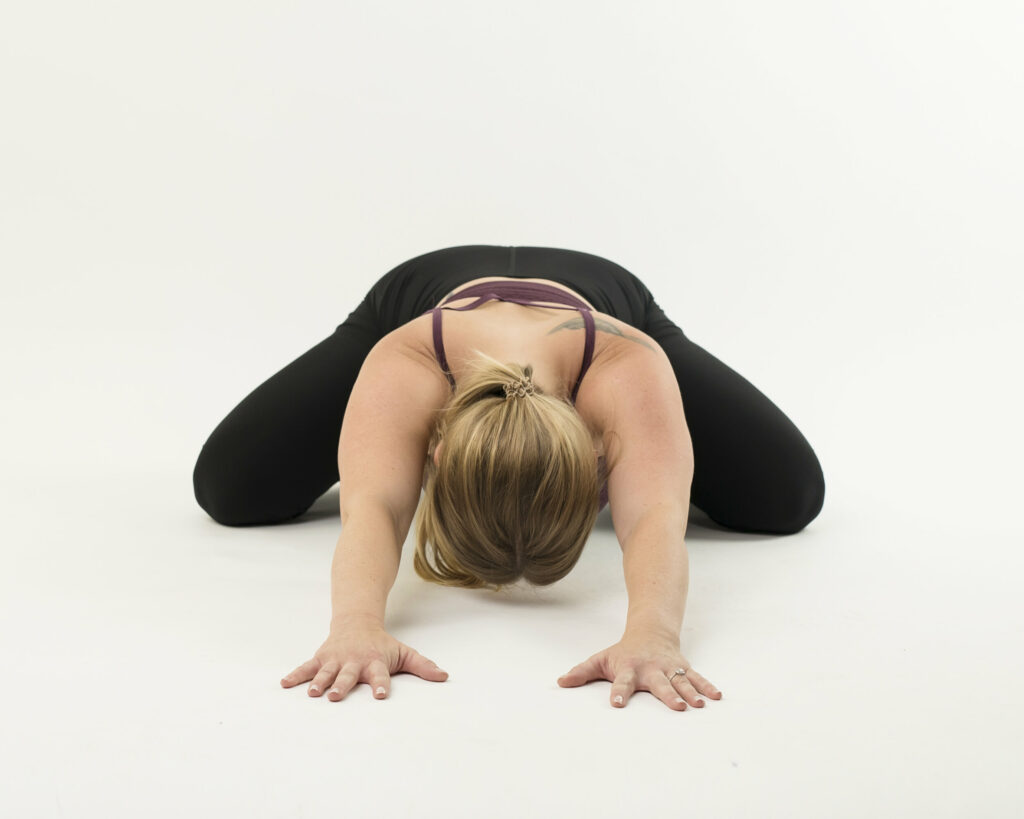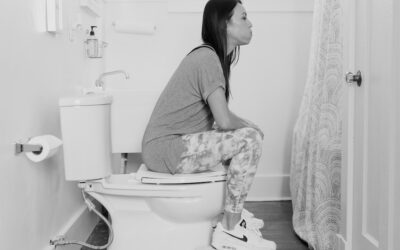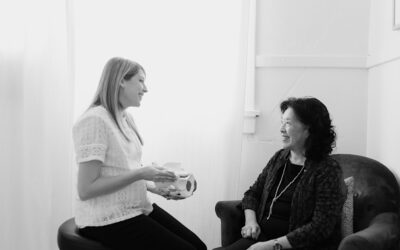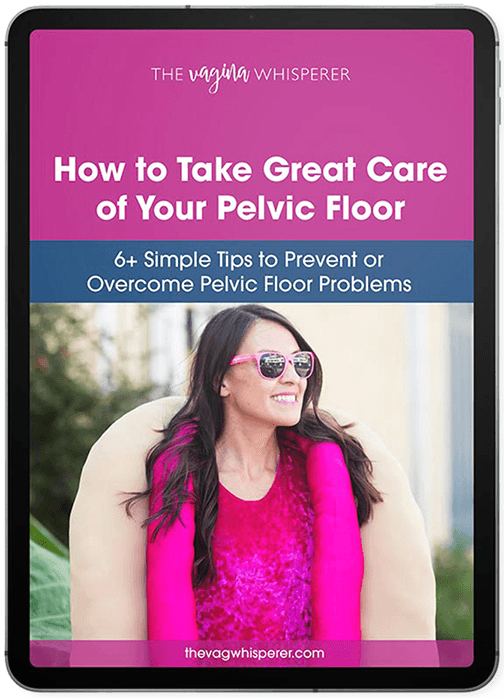What does pelvic organ prolapse feel like? You may feel like you can’t so much as sneeze without risking feeling vaginal pressure or heaviness. The good news is that prolapse is often treatable without surgery. You can find relief with easy, at home pelvic floor prolapse exercises!
But to know how to treat prolapse, we first have to understand what it is.
What is pelvic organ prolapse?
Prolapse occurs when connective tissue that normally holds your organs in place weakens or stretches over time. For example, uterine prolapse is a condition in which the uterus descends in the pelvic cavity.
Symptoms may include:
- Vaginal pressure or bulging
- Feeling that your insides are falling out of your vagina
- Low back pain that is worse as the day goes on
- Pelvic heaviness that is worse at the end of the day
- Difficulty emptying when peeing or pooping
- A need to re-position during poops
- Urinary leakage or incomplete emptying
There are varying stages or degrees of prolapse – ranging from 0 (not present) to 4 (full eversion or lowering of the tissue). Stage 4 occurs when the organ involved is actually protruding out of the vaginal opening and typically requires surgical intervention.
Pelvic floor prolapse exercises and pelvic floor supports are effective for decreasing symptoms of grades 1 through 3.
Causes of prolapse
While pregnancy and delivery is one known cause, it is definitely not the only one. Other causes of prolapse can include:
- Vaginal and/or vulvar trauma via vaginal deliveries
- Tissue restriction from healing cesarean scars or perineal scars
- Chronic pelvic muscle overactivity
- Hormonal changes during peri-menopause or menopause
- Pelvic surgery
- Congenital factors
- Race (Caucasian women are at higher risk)
- Activities that increase pressure in the abdomen
- Chronic constipation
- Chronic obstructive airway disease (COPD)
Treatment Options
Kegel exercises are not always the answer! There are many treatment options available for pelvic organ prolapse, from more intensive to at home solutions.
#1 Go to Pelvic Floor PT.
Before an internal assessment, your PT will take a thorough history. They’ll ask questions to get an idea of the types of stresses your tissue is sustaining on a daily basis and determine the best treatment!
#2 Get a squatty potty.
This puts your pelvic floor muscles in a more lengthened position. Doing so will make pooping and peeing easier, reducing the likelihood of straining and urinary incontinence. This reduces the pressure on the already weakened vaginal wall.
#3 Swap out your desk chair for an exercise ball.
A popular alternative seating solution to alleviate symptoms is sitting on an exercise ball. Sitting on a ball engages your pelvic floor and abdominal muscles, while providing support to the pelvic area.
#4 Don’t push to pee!
That’s right, straining to get the flow of urine going is not how you should pee. So, when you sit on the toilet, let the flow of urine begin on its own. The same applies to “just in case” peeing. You should only be peeing if you have true urgency.
#5 Breathe correctly.
Don’t hold your breath! This can increase the pressure in your abdomen, pelvic floor and vaginal muscles. So, start using a slow exhale (like blowing out birthday candles) when you exert energy. This includes when working out, picking up kiddos or pets, at work if you have a physical job, etc.
Pelvic Floor Prolapse Exercises
Relaxing and strengthening the pelvic floor go hand in hand! Remember to always stretch before AND after high intensity activity. Stretching prior to working out can help address any tightness present before you begin your workout, which ensures proper muscle function during the workout.
Bridges with Ball Squeeze
Lie on your back with your knees bent and feet flat on the floor. Place an exercise ball between your knees and inhale. Engage your pelvic floor with a Kegel contraction, then engage your core muscles and pull your belly button in toward your spine. Push your hips off the floor, aligning them with your knees and shoulders.
Hold for 3 breaths, squeezing the ball between your legs. Repeat 5 times.
Modified Plank
Rest on your forearms, with knees on the ground in the modified plank position. Hold for 10s, then take a break.
Bird Dogs
In hands and knees position, point one arm out straight in front of you and extend the opposite leg behind you, keeping hips squared. Hold for 5 seconds, then switch sides.
Knee to Chest
Sit on the floor with your feet flat on the ground. Inhale deeply and, as you exhale, bring one of your knees up towards your chest. Wrap your hands around the back of the thigh to pull your knee in closer and hold the position for 15 to 20 seconds.
Child’s Pose
Start by kneeling on the floor with your knees hip-width apart. Keep your big toes touching each other and sit back onto your heels. Then, bring your chest towards the floor and rest your forehead on the ground. Reach forward with your hands and spread your palms out flat onto the floor in front of you. Hold this position for 30 seconds to a minute before slowly coming back up into kneeling position.
Pain Management
Sometimes, the above solutions are just not enough for your pelvic health and quality of life. If you’re in pain, try the options below for some quicker relief.
External support devices include:
- Bao Bei maternity support leggings, shorts, or bloomers
- SRC compression shorts or leggings
- V2 Pelvic Floor press
Internal Supportive devices include:
- Poise Impressa or Revive support
- Pessary (you’ll need an OB/GYN or Urogynecologist to fit you)
- Tampon for added support with exercise)
- 10 minutes of pelvic elevation at the end of the day. Use a pelvic wedge or place pillows under your pelvis. This can help reduce swelling and pressure in the vulvar and vaginal regions.
- Use ice on your pelvic floor if you have a lot of vaginal or vulvar pain
Pelvic floor therapists are your go to healthcare professionals for preventative exercises and stretches for those experiencing prolapse. Take this short, 1 minute quiz to determine which V-Hive program is right for you, and get started healing your pelvic floor and core!


